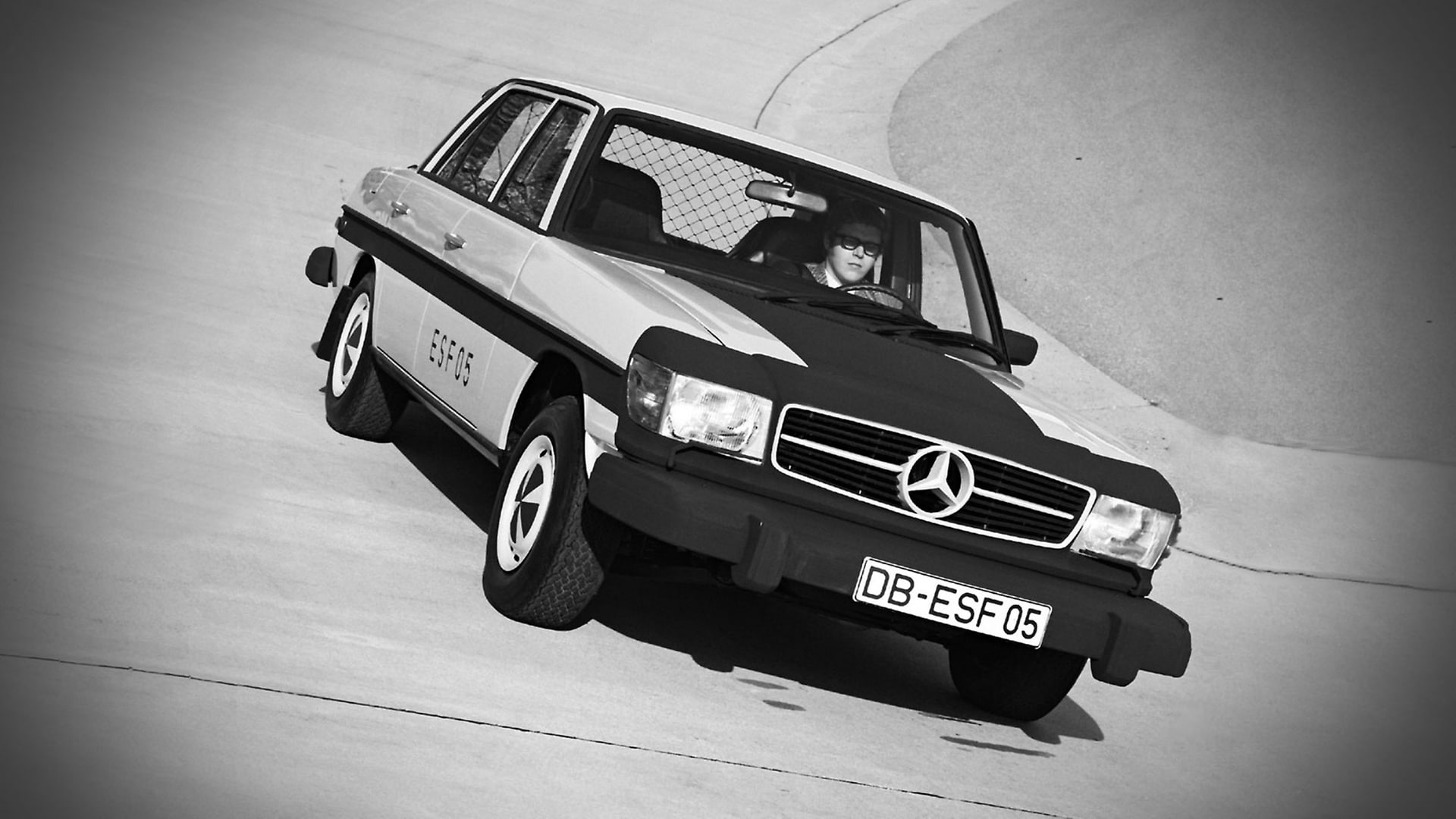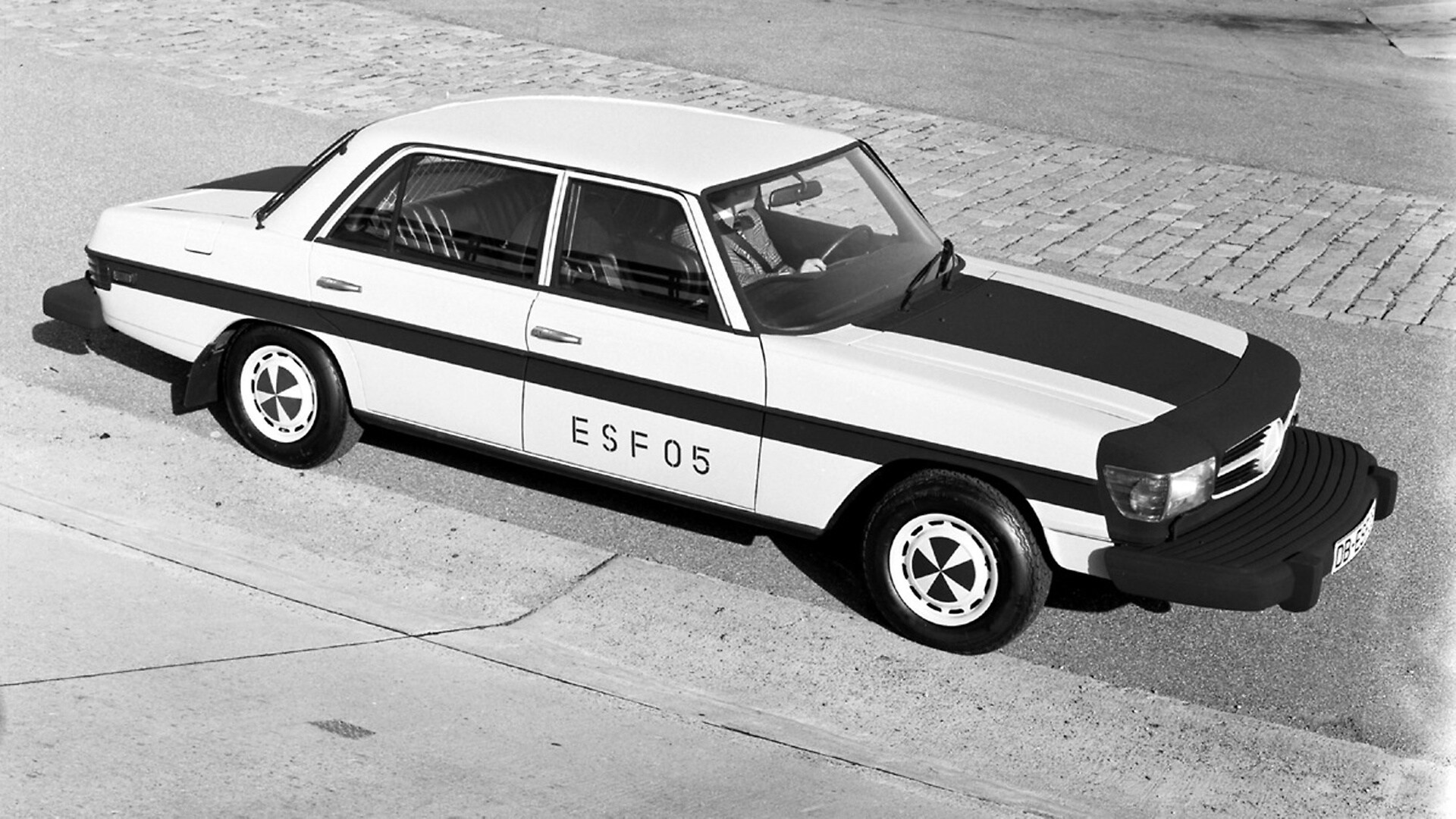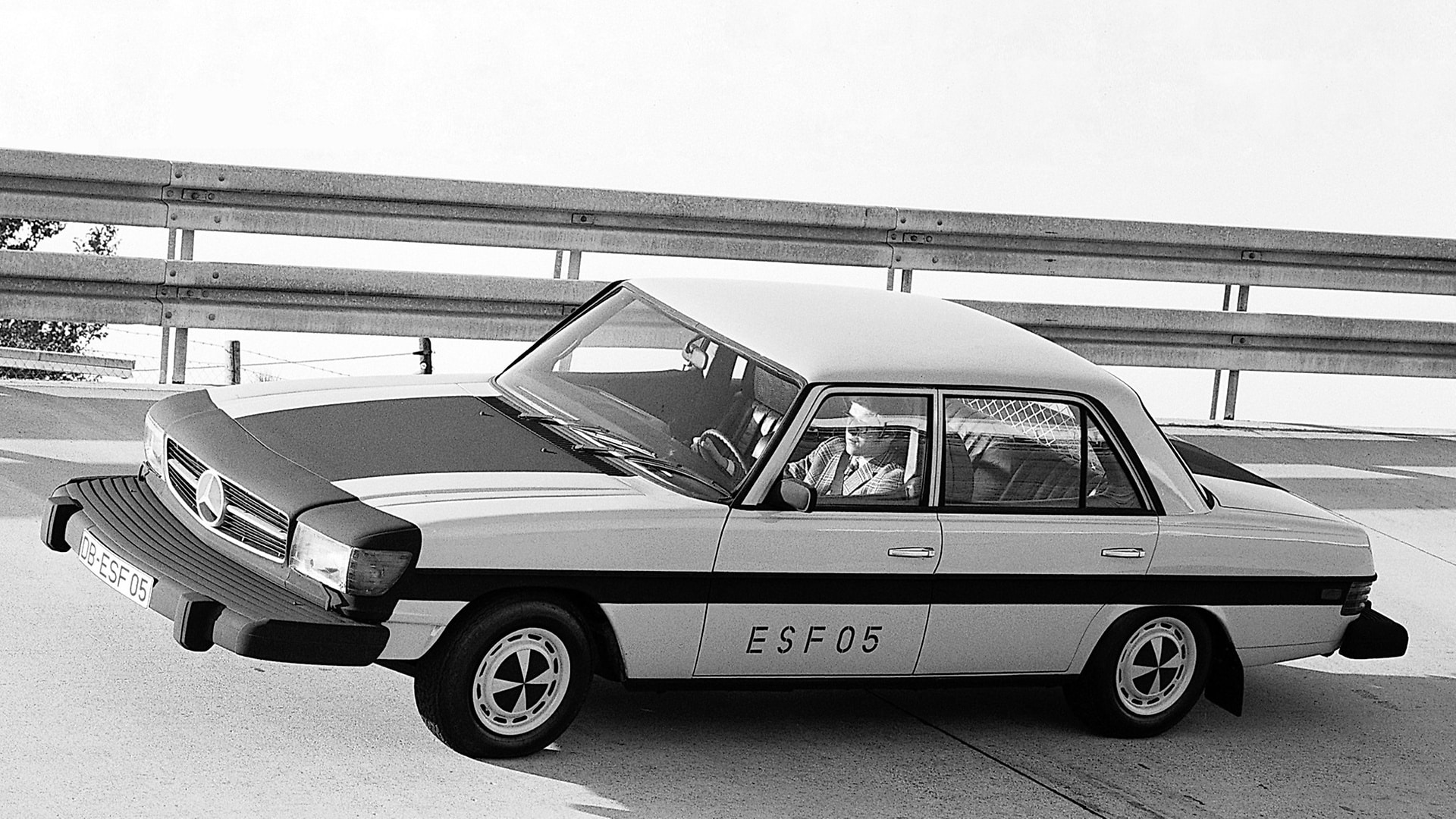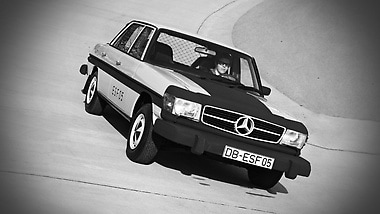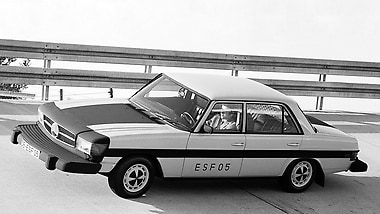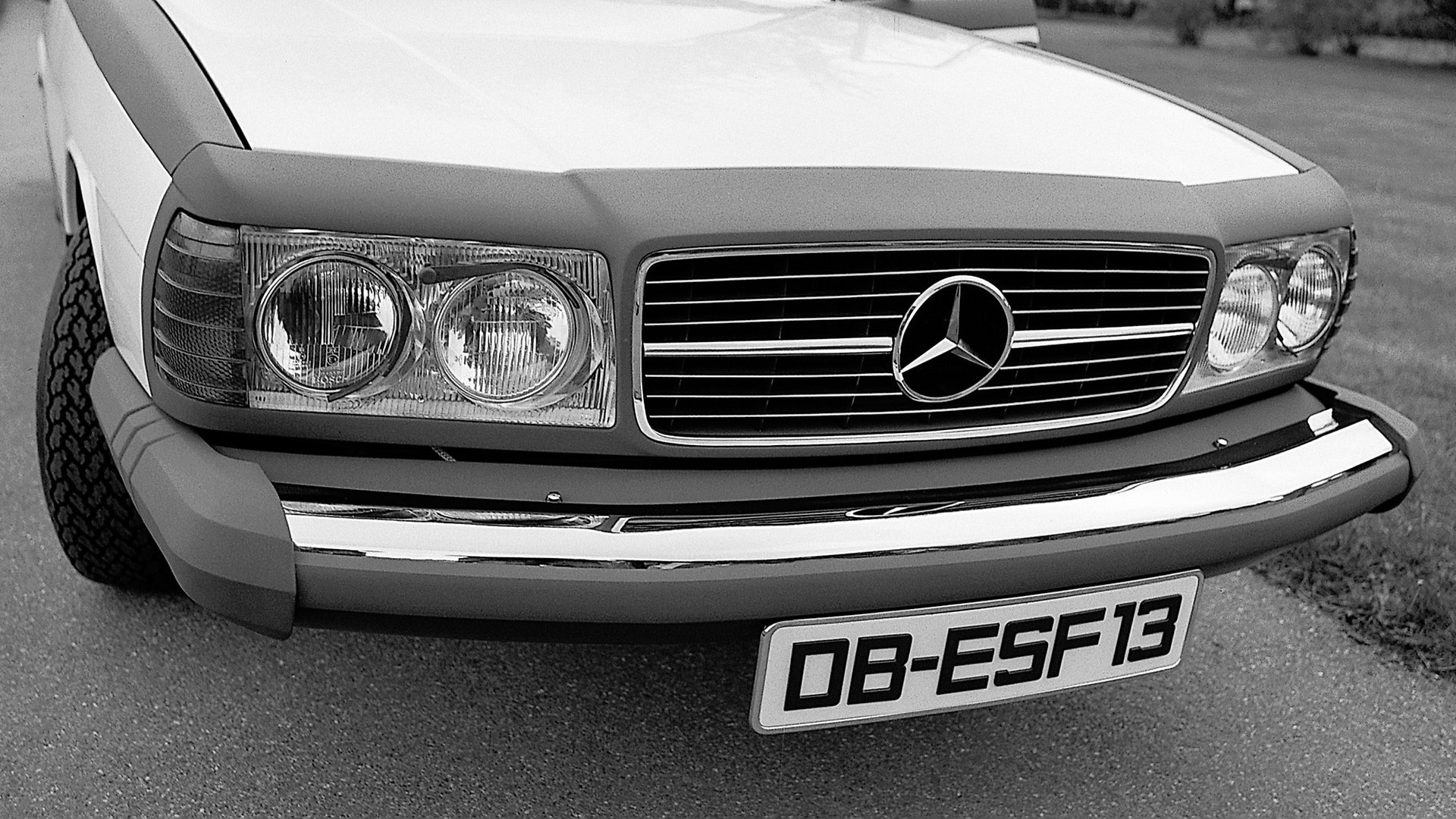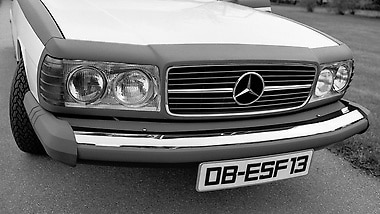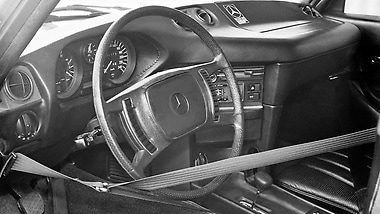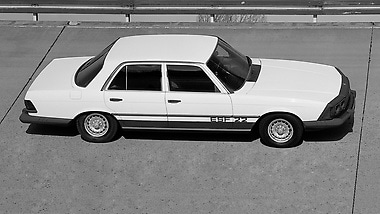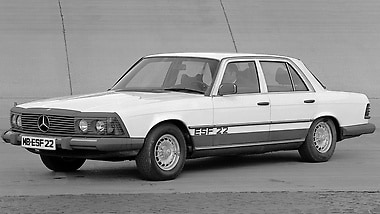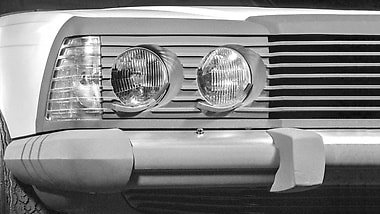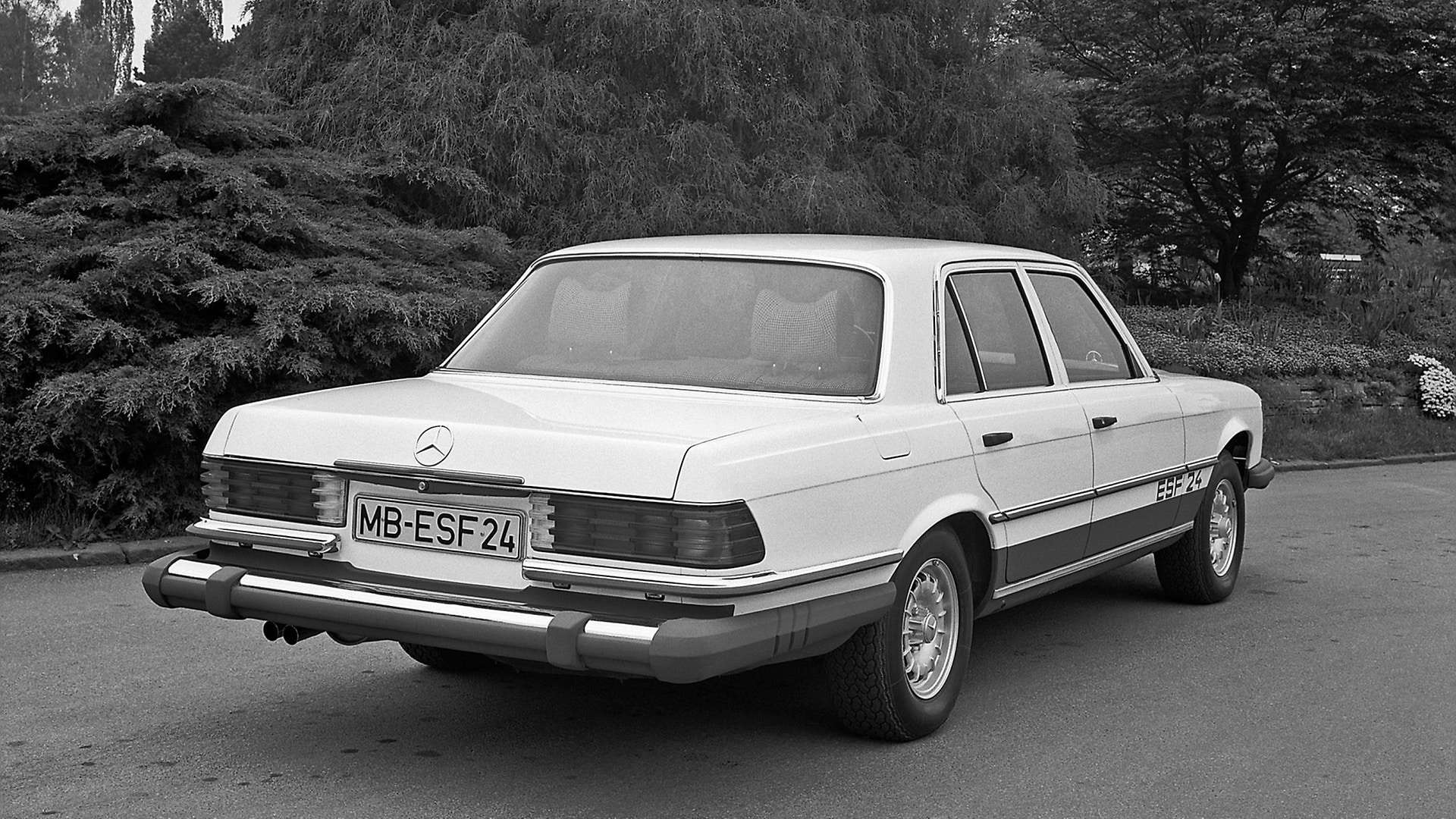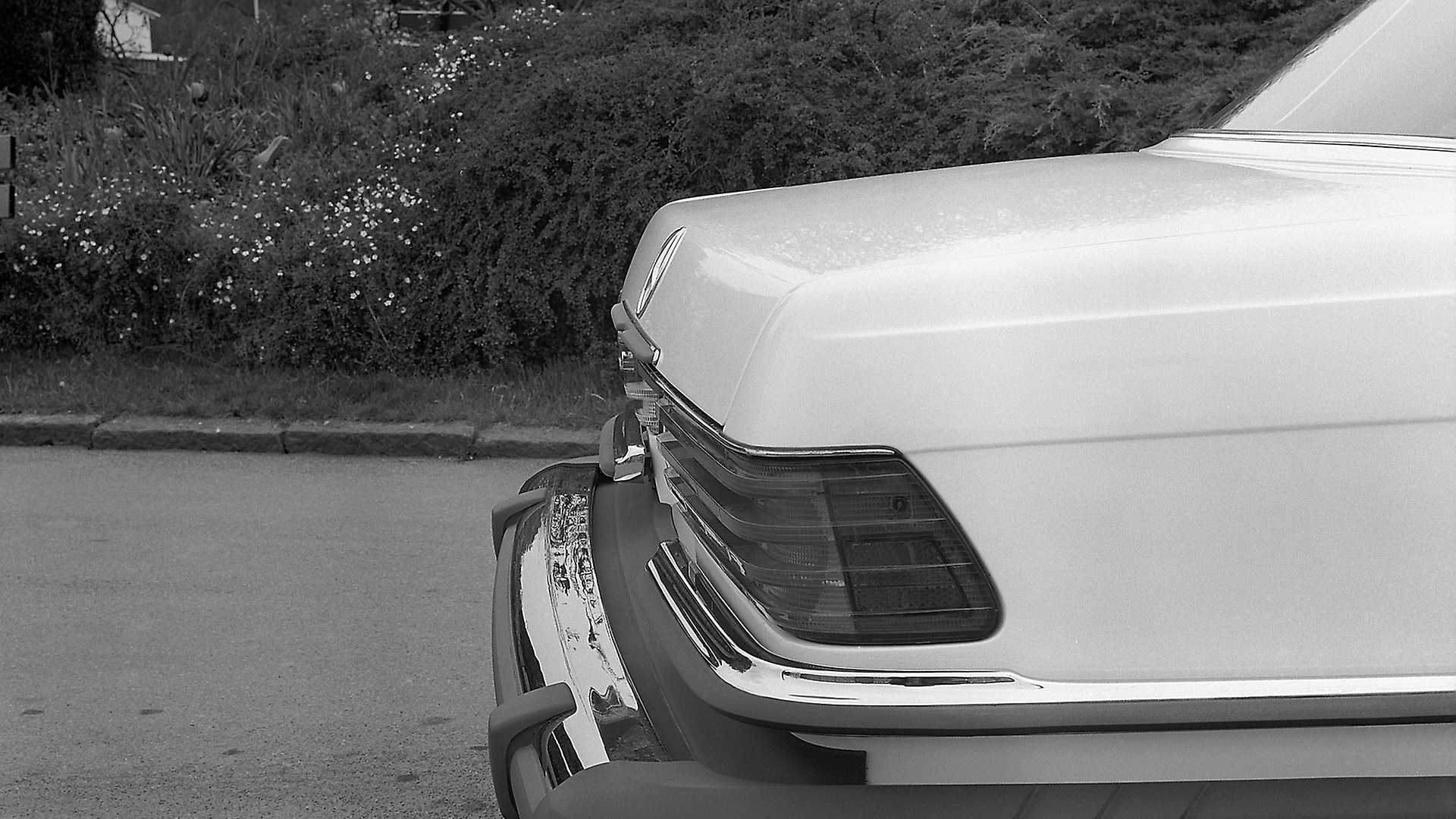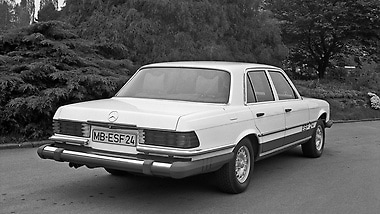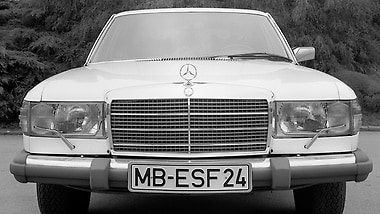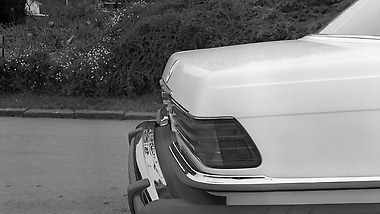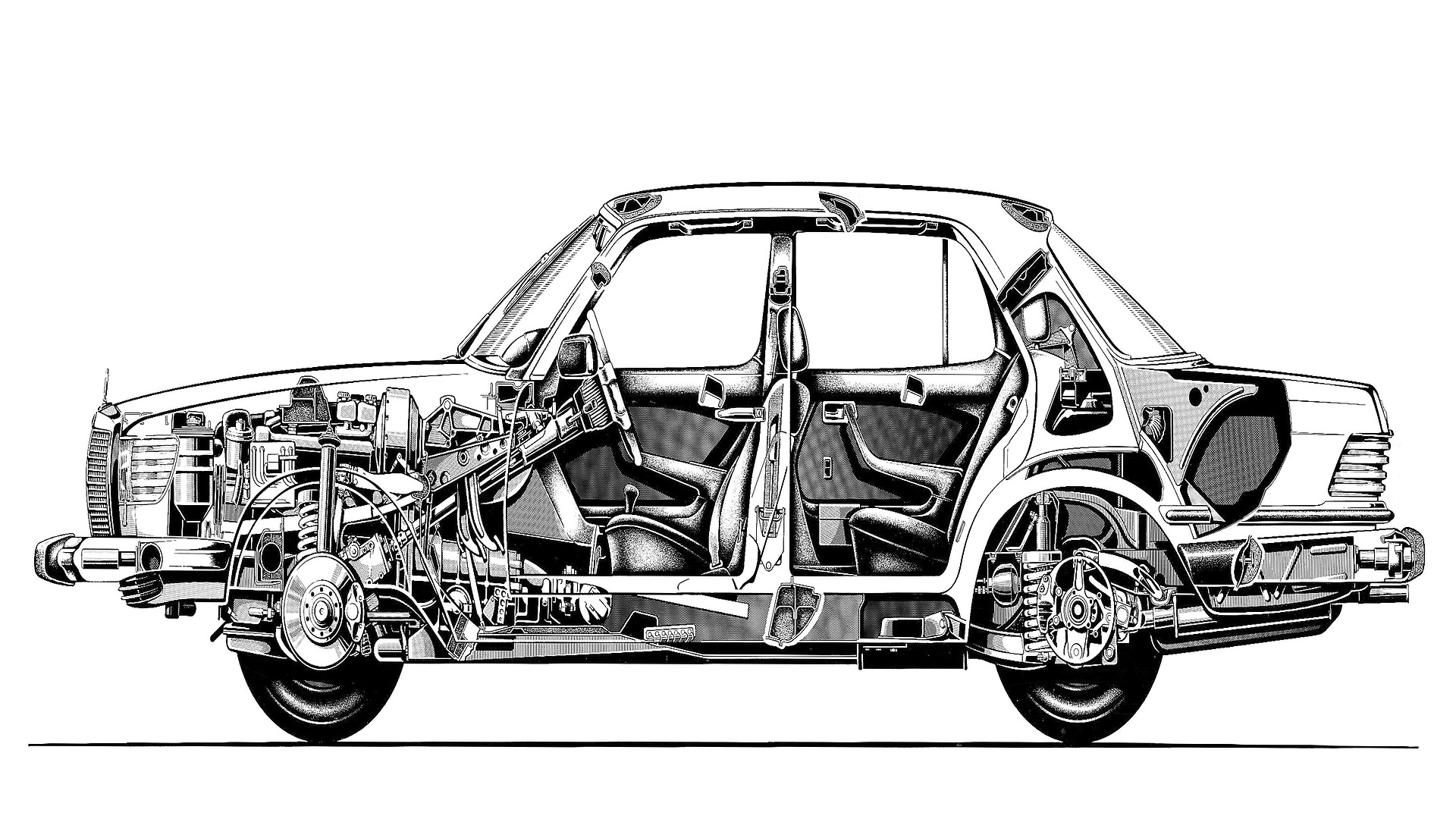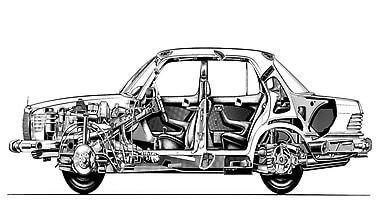All this provided an important basis for the safety level of car bearing the Mercedes star. The consolidated test report (1975) came to the same conclusion. It states: "The ESF 24 brings the project to a close, as this vehicle represents the best possible compromise between the original ESV requirements and our present production models."
Safety aspects having been part of the development process for new models as a matter of course at Mercedes-Benz for many years, the ideas first realised during the development of the ESFs entered series production in rapid succession. Milestones include the following:
- 1978: The anti-lock braking system ABS enters series production
- 1980: Introduction of the driver airbag and belt tensioner as a world innovation
- 1995: Belt force limiters and sidebags enter series production.
Mercedes-Benz also brought an immense number of other active and passive safety features to market, as the brand continues to be a pacemaker in the field of vehicle safety.
In keeping with this role, Mercedes-Benz presented a new Experimental Safety Vehicle in 2009. In presenting the ESF 2009, the brand not only marked two anniversaries, namely "50 years of the safety body" and "40 years of accident research", but also managed to bring the ESV Conference back to Stuttgart after 38 years. This ESF combined the latest concepts and ideas for further improvements in active and passive safety – with a time horizon that was often well into the future. Numerous innovations in the ESF 2009 have meanwhile entered series production.
,xPosition=0,yPosition=0.5)
